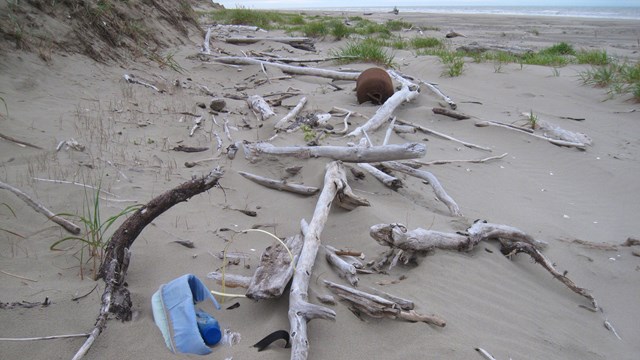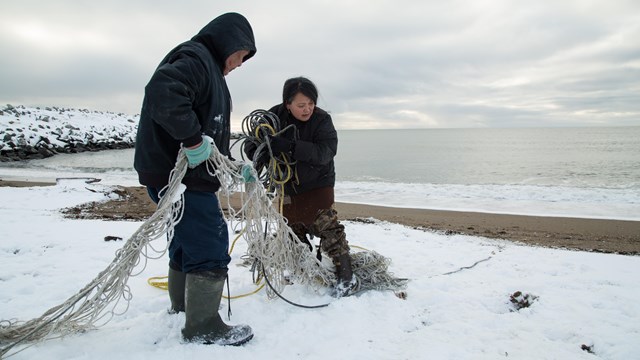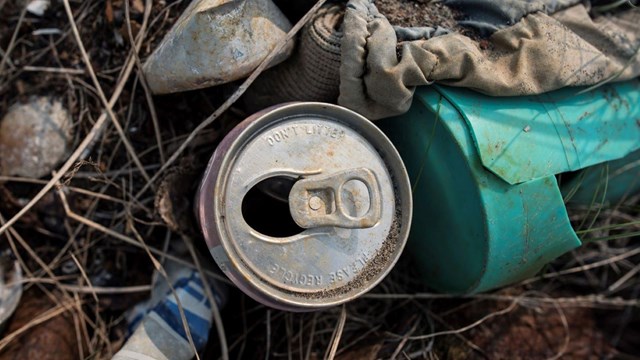
NPS/Elise Wahl, Timberdoodle Studio In the ocean, microplastics can mix in with pockets of nutrient-rich water, which is full of seasonally abundant plankton. Plankton are tiny animals (zooplankton) and plants (phytoplankton) that are important food for the tiniest of fishes to the largest of whales. These animals are ingesting a side of microplastics along with their plankton soup. Microplastics can absorb harmful pollutants or leach out toxic chemicals. Wildlife may ingest or be exposed to these contaminants, which is of particular concern for Alaskan communities that depend on harvesting marine mammals and resources. However, more research is needed to understand how wildlife and people might be affected. There is no part of the ocean left untouched by marine debris.Arctic sea ice in remote locations can contain high concentrations of microplastics, surpassing some highly contaminated surface waters in other parts of the world. While the Bering Land Bridge coastline may not be littered with brightly colored microplastics, that doesn’t mean they’re not there. One National Park Service study counted just over 40 pieces of microplastics per pound of sand. This is roughly the same amount found in Boston Harbor! Most of these microplastics were microfibers, from materials such as polyester or nylon. These synthetic materials are used to make clothing, furniture, fishing nets, and other products. When we wash clothing, microfibers break apart from the fabric and can find their way into the ocean. Microfibers can float through the air and eventually settle in the ocean or be carried by rivers and wastewater into the ocean. Explore more about impacts of marine debris in this region:
Marine Debris
One big ocean, one big issue. 
Ocean Health is Our Health
How does marine debris affect habitats, animals, and people? 
How Can You Help?
Small decisions make a BIG difference. |
Last updated: October 6, 2023
